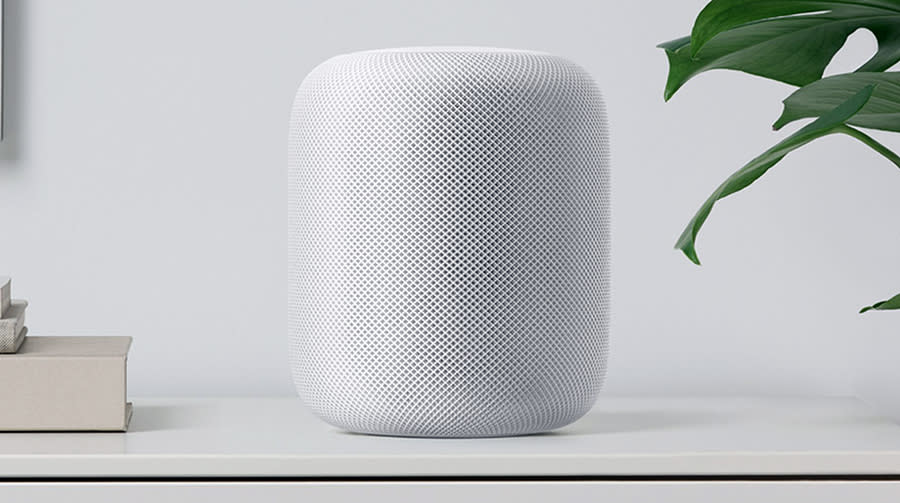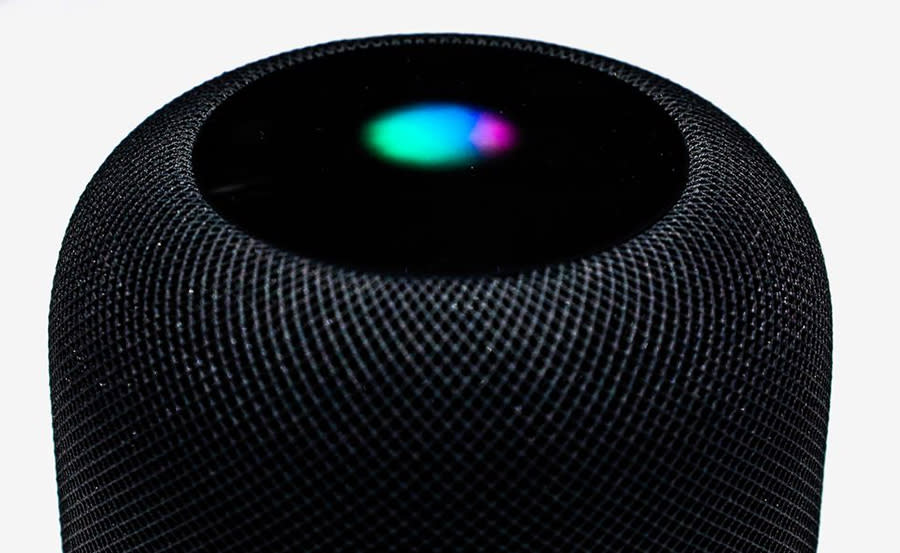David Pogue’s sneak preview of the Apple HomePod
After missing its holiday shipping deadline, Apple (AAPL) is almost ready to release the HomePod, its new smart speaker — something like the Amazon Echo or Sonos One. It will ship on Feb. 9.
Apple hasn’t yet let reviewers take one home for testing. But this week, it did something uncharacteristic and a little weird: It invited us to one-on-one listening sessions in a Manhattan corporate apartment. The rules were: listen, don’t touch. (And listen, don’t take pictures.)
I’ll write a full review once I get my hands on this little rounded cylinder. But even the 45-minute demo was enough to confirm one thing: This smart speaker is more about “speaker” than “smart.”

All about that bass and treble
A smart speaker is like Siri for the home (or “OK Google,” or Microsoft Cortana): You can ask it questions and give it commands by speaking from across the room, rather than hauling out your phone. The killer app, of course, is music: you can just say, “Alexa, play some light jazz” or “OK Google, play some Billy Joel,” and it starts.
The HomePod is a squat, rounded cylinder (6.8 inches by 5.6 inches), available in black or white. You tap the top to pause playback or make the + and – volume buttons appear. You can double-tap for “next track,” or triple-tap for “previous track.” (Of course, you can also adjust the volume, play/pause, or skip tracks by voice.) A very cool colorful swirling LED light appears whenever HomePod is speaking or listening, and then disappears as though no screen were present.

The HomePod joins a long list of smart speakers, starting with the original, the Amazon Echo ($100); Google, Sonos, Harman Kardon, and others make them, too. But Apple has tried to differentiate the HomePod, and justify its high price ($350), by giving it better sound than any competitor — and in that, it has succeeded.
In a devastatingly effective demo, Apple lines up four of these things: The Google Home Max ($400), Sonos One ($200), Amazon Echo ($100), and the HomePod. They’re volume-matched and rigged to an A/B/C/D switch, so a single song can hop from one to the other. (Apple even installed a halo backlight behind each speaker that illuminated to show you which one was playing.)
The HomePod sounded the best. Its bass, in particular, was amazing: full and deep, but also distinct and never muddy — you could hear the actual pitch of the bass notes, not just the thud. That, unsurprisingly, is where other small speakers have trouble.
The Amazon Echo is a much smaller, slimmer device, one-third the price, so it’s forgiven for sounding thin compared with the HomePod. The Sonos One came awfully close to the HomePod’s rich sound; you’d really have to hear the A/B test to declare a difference. The real shock was the Google Home Max, a massive, 12-pound machine that’s supposed to be all about the sound; it sounded like cardboard compared with the HomePod and Sonos.
Maybe that’s because it contains only two tweeters and two woofers; the HomePod contains seven tweeters, arrayed in a circle, and a gigantic, 4-inch woofer, capable of moving 0.8 inches, pointing out the top. Or, as Apple describes it, “array of seven beam-forming tweeters, each with its own amplifier and transducer. And each custom designed with a precision acoustic horn that focuses sound for tremendous directional control.”

So there’s your good news: If Apple wanted to win in sound quality, it’s succeeded.
And now the bad news.
Not so smart
The HomePod has Siri built in. So you can ask about sports, weather, news, measurements, facts, timers, reminders, and so on.
And you can voice-control your home, to the extent that you’ve bought Apple HomeKit-compatible thermostats, lights, and so on. (Unfortunately, Siri can’t control anything from Nest, which is probably the most popular brand.)
And you can call up whatever music you want, just as on the other speakers — except that the HomePod works only with Apple’s own Apple Music service ($10 a month), not Spotify, not Pandora, not Google Play, not iHeart Radio.
To be clear: You can start up these services on an iPhone app and direct the playback through the HomePod; but you cannot command them by voice. (You can also call, by voice, for songs in your iTunes or iTunes Match libraries.)
The rival speakers, on the other hand, all let you control the most popular music services by voice, which is fantastic.

The HomePod is not multi-room yet, either, so you can’t say “Play Barry White in the bedroom,” as you can with its rivals. (That will come later in the year, Apple says.) You can’t even buy two HomePods and get stereo, as you can with is rivals. (That’s coming soon, too — which is good, because in a “preview” demo, Apple played me two HomePods in stereo, and they sounded incredible. You could close your eyes and imagine a pair of expensive tower speakers.)
The HomePod lets you dictate and read aloud text messages through your iPhone, and can be a speakerphone for the iPhone. But it doesn’t let you make free phone calls to any phone number, as the Amazon Echo and Google Home do (without your needing a phone).
Bringing it home
We’ll know more about the HomePod in the real world once Apple makes it available to reviewers.
In the meantime, it’s pretty obvious that the HomePod sounds better than any other smart speaker —but its limited smarts make it attractive only to Apple Music subscribers.
Remember the iPod? When it was released in 2001, it worked only with the Mac. Not until Apple made it compatible with Windows, too, a year later, did it become a mega-hit. Apple might do well to remember that with the HomePod: Compatibility sells.
David Pogue, tech columnist for Yahoo Finance, welcomes non-toxic comments in the Comments below. On the Web, he’s davidpogue.com. On Twitter, he’s @pogue. On email, he’s poguester@yahoo.com. You can sign up to get his stuff by email, here.
Read more:
There’s a new drone that will fit into your pocket
Exclusive: What Fitbit’s 6 billion nights of sleep data reveals about us
Tech that can help you keep your New Year’s resolutions
Pogue’s holiday picks: 8 cool, surprising tech gifts
Google’s Pixel Buds: Wireless earbuds for the extremely tolerant
Study finds you tend to break your old iPhone when a new one comes out
Rejoice: Sonos Speakers are finally voice-controllable
Follow Yahoo Finance on Facebook, Twitter, Instagram, and LinkedIn


